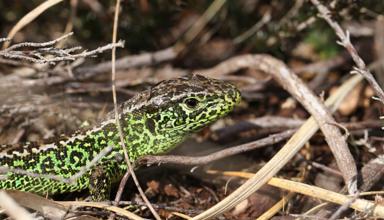The State of Natural Resources Report (SoNaRR)
The first State of Natural Resources Report (SoNaRR) has been published. The report is an assessment of the state and trends of natural resources in Wales and considers the extent to which sustainable management of natural resources is being achieved. Produced by Natural Resources Wales (NRW), with contributions from many stakeholders, it is the first statutory product of the Environment (Wales) Act 2016.
Policy context
The production of SoNaRR is an iterative process and the report will be updated and published every five years by NRW. It provides the evidence base to inform the Welsh Government’s National Natural Resource Policy (NNRP) which is another duty under the Environment Act.
The NNRP is currently being developed and a consultation is expected to be published in October/November 2016, with the final policy to be published in March 2017. SoNaRR will also feed into the Area Statements (an additional responsibility of NRW under the Environment Act) which will facilitate the implementation of the NNRP by: a) specifying priorities, risks and opportunities for sustainable management of natural resources which NRW considers need to be addressed in the area, and b) stating how NRW proposes to address them. The evidence presented in SoNaRR will be also used to inform the well-being assessments being prepared by Public Service Boards (PSBs) as part of the requirements of the Well-being of Future Generations (Wales) Act 2015. SoNaRR presents ecosystem services and benefits in a way that is intended to link clearly to the 7 well-being goals to help identify threats to long-term social, cultural, environmental and economic well-being.
There is also a role for SoNaRR in informing the Future Trends Report to be published under the Well-being of Future Generations Act.
Structure
The content and structure of the report is as follows:
Chapter 1 provides an introduction and outline of the approach.
Chapter 2 provides an overview of the social, economic, cultural and technological drivers of change to natural resources and ecosystems in Wales.
Chapter 3 sets out an assessment of the state of natural resources in Wales.
Chapter 4 explores the concept of resilience, drawing together an assessment of the resilience of ecosystems based around 4 key attributes.
Chapter 5 looks at the benefits that ecosystems provide and the contribution they make to well-being.
Chapter 6 explores how Wales is currently using and managing its natural resources, and identifies risks created by failures in the current management systems.
Chapter 7 sets out a natural resources and well-being risk register for Wales. A key principle underlying the report is the Sustainable Management of Natural Resources (SMNR) which is an approach introduced by the Environment Act (see Natural Resources Policy Statement (PDF 779KB) pg 8).
Aligned with this is the concept of ecological resilience which is a key consideration within the report. Resilience is defined by four attributes; diversity, connectivity, extent and condition, and is linked to the well-being of the people of Wales in a novel approach within SoNaRR.
SoNaRR’s general messages and priorities for action
NRW has described the conclusions of the report as a ‘wake-up-call’ stating that it is ‘unlikely that ecosystems across Wales have sufficient resilience and this will impact on their capacity to provide services and benefits into the future’. The key findings are that:
- Many plants and animal species are in decline.
- Wales failed to meet its 2010 international and national biodiversity targets, and in many cases the decline has continued.
- In terms of ecosystem resilience, diversity is declining as shown by loss of habitats and species. The ‘extent’ of some habitats has declined significantly, ‘condition’ shows mixed results, and ‘connectivity’ has greatly reduced. All habitats have problems with all four attributes of resilience.
- There are broad, regional variations in ecosystems that reflect historical land use and habitat loss, with diversity, extent and connectivity tending to be relatively high in upland and coastal regions, low in lowland regions and especially low along major river valleys.
- The conditions of mountains, moorland and heaths is a significant concern for their long term resilience.
- A range of issues is contributing to reducing the resilience of Wales’ ecosystems. This affects the delivery of ecosystem benefits, which in turn impacts on people’s wellbeing.
- The full value of natural resources and ecosystems is not being adequately taken into consideration in various decision-making processes.
- Whilst much evidence and data has been drawn upon in production of the report, there are still significant gaps in data.
Launch and stakeholder responses
SoNaRR was launched on Monday 3 October. The Cabinet Secretary for Environment and Rural Affairs, Lesley Griffiths, endorsed the report stating that it would support policy decisions regarding (amongst other things) recreational opportunities, climate change mitigation, nature conservation, and sustainable agriculture in efforts to reach the seven well-being goals.
The Cabinet Secretary stated that SoNaRR is the start of a dialogue, and that collaborative working across different sectors would be needed to achieve the sustainable management of natural resources now and in the future. Several stakeholders also gave speeches to endorse SoNaRR. Confor welcomed the integrated sector approach outlined within the report, and saw it is as tool to improve connectivity and engagement across sectors.
Dwr Cymru highlighted that SoNaRR would inform their strategy to achieve the long term sustainability of water services for the environment and customers alike, especially in the face of climate change. RSPB welcomed SoNaRR and highlighted the importance of the resilience assessments which will help to identify opportunities for ecological restoration. RSPB highlighted that SoNaRR was one piece of the puzzle and that the work must be publicised and engaged with for SMNR to become a reality.
Article by Katy Orford, National Assembly for Wales Research Service






